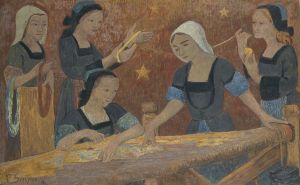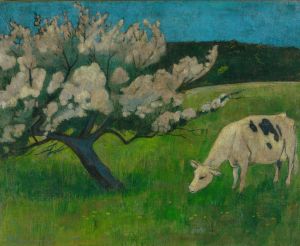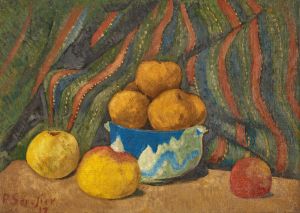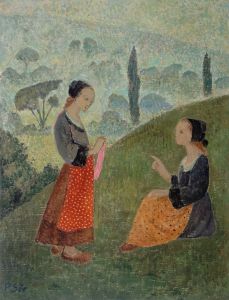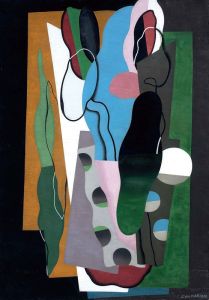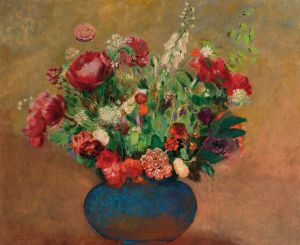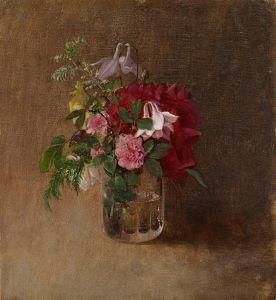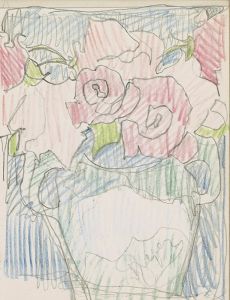
Les pavots
A hand-painted replica of Paul Sérusier’s masterpiece Les pavots, meticulously crafted by professional artists to capture the true essence of the original. Each piece is created with museum-quality canvas and rare mineral pigments, carefully painted by experienced artists with delicate brushstrokes and rich, layered colors to perfectly recreate the texture of the original artwork. Unlike machine-printed reproductions, this hand-painted version brings the painting to life, infused with the artist’s emotions and skill in every stroke. Whether for personal collection or home decoration, it instantly elevates the artistic atmosphere of any space.
Paul Sérusier's painting Les Pavots (The Poppies) is a work by the French Post-Impressionist artist, who was a central figure in the Nabis movement. Sérusier, born in 1864, was known for his innovative approach to color and form, influenced by his interactions with Paul Gauguin and the Symbolist movement. While Les Pavots is not as widely discussed as some of Sérusier's other works, it reflects his characteristic style and artistic philosophy.
The painting depicts a group of poppies, rendered in bold, simplified forms and vibrant colors. Sérusier's approach in this work aligns with the principles of the Nabis, a group of artists who sought to move beyond Impressionism by emphasizing the emotional and symbolic potential of color and composition. The Nabis were heavily influenced by Gauguin's use of flat planes of color and his rejection of naturalistic representation, which Sérusier adopted and adapted in his own work.
Sérusier's artistic philosophy was rooted in the idea that art should not merely imitate nature but should instead convey the artist's inner vision and emotions. This is evident in Les Pavots, where the natural forms of the flowers are stylized, and the colors are intensified to create a sense of harmony and rhythm. The painting exemplifies Sérusier's belief in the decorative and symbolic power of art, a hallmark of the Nabis movement.
The exact date of Les Pavots is not definitively documented, but it is consistent with Sérusier's mature period, during which he explored themes of nature and spirituality through a highly personal and symbolic lens. The work likely reflects his interest in synthesizing elements of Japanese art, medieval stained glass, and Gauguin's Synthetism, all of which influenced the Nabis' aesthetic.
Today, Les Pavots is recognized as an example of Sérusier's contribution to the development of modern art, particularly in its emphasis on abstraction and the expressive potential of color. The painting is housed in the Musée d'Orsay in Paris, which holds a significant collection of works by Sérusier and other members of the Nabis group. The museum's collection provides valuable insight into the artistic innovations of the late 19th and early 20th centuries, of which Sérusier was a key proponent.
Les Pavots continues to be appreciated for its bold use of color and its role in the broader context of the Nabis movement, which sought to redefine the boundaries of art and its relationship to the viewer. The painting stands as a testament to Sérusier's enduring influence on the trajectory of modern art.






